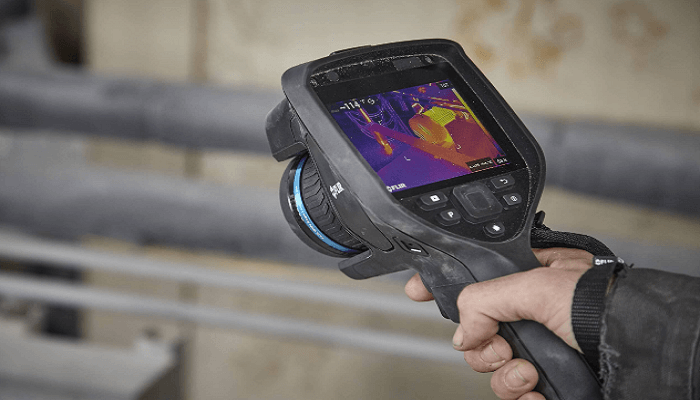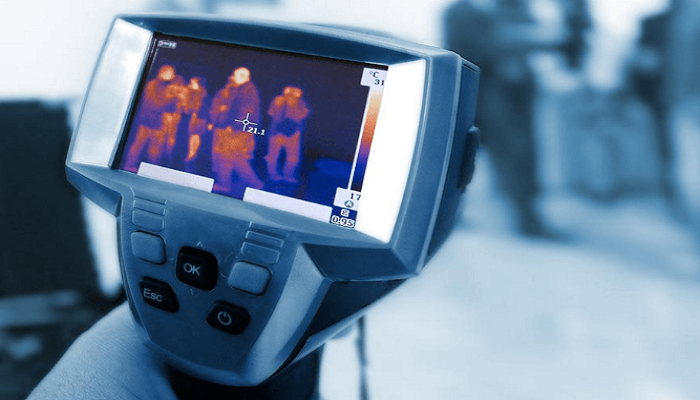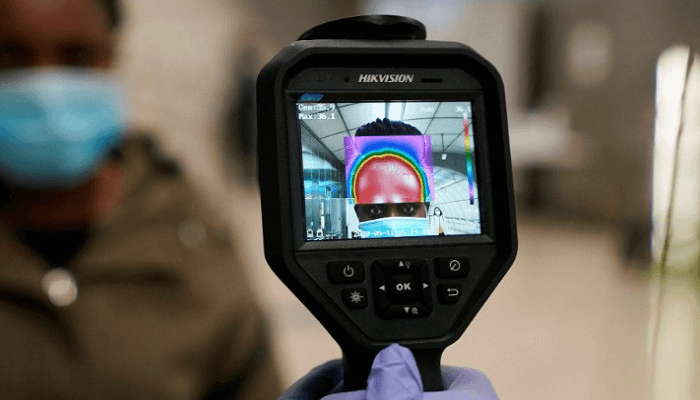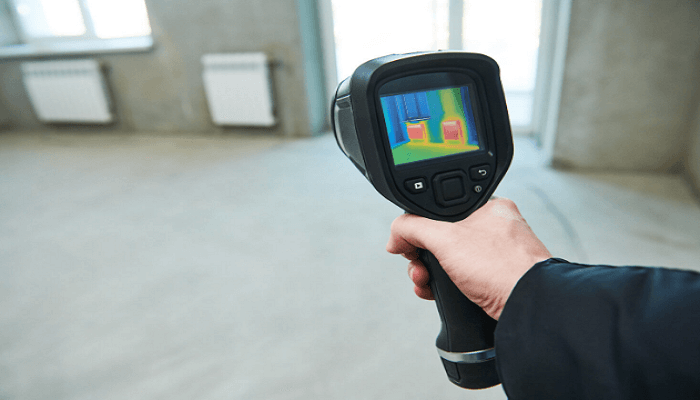Why Are Thermal Cameras So Expensive – Thermal cameras have become increasingly popular in recent years for a variety of applications, from building inspections to firefighting to security monitoring.
However, one common question that arises when considering these cameras is why they are so expensive. In this article, we will explore the various factors that contribute to the high cost of thermal cameras and help you understand why investing in a quality thermal camera is worth the expense.
So let’s dive in and find out why Thermal cameras are so expensive.
Factors That Contribute: Why Are Thermal Cameras So Expensive

Thermal cameras are complex devices that require a significant amount of technology and engineering to produce. The following are some of the key factors that contribute to their high cost:
Sensor Technology
One of the primary reasons why thermal cameras are so expensive is the technology used to create the sensors.
Thermal cameras use infrared sensors that are capable of detecting heat and generating images based on the temperature differences within a scene.
These sensors are much more advanced than those found in traditional cameras, and they require specialized manufacturing processes that drive up the cost.
Resolution
Thermal cameras are also more expensive than traditional cameras because they require a much higher resolution to accurately capture temperature differences.
Higher resolution means more pixels, and more pixels mean more processing power, which can significantly increase the cost of the camera.
Lens Technology

The lenses used in thermal cameras are also more advanced than those found in traditional cameras.
These lenses must be made from materials that can withstand extreme temperatures and are designed to focus infrared radiation onto the sensor.
The lenses must be carefully calibrated to ensure accurate temperature measurements, which requires specialized equipment and expertise.
Design and Manufacturing
The design and manufacturing process for thermal cameras is much more complex than for traditional cameras.
These cameras must be carefully calibrated to ensure accurate temperature measurements and must be constructed from materials that can withstand extreme temperatures and other environmental factors.
This requires specialized equipment, expertise, and quality control processes that add to the overall cost of the camera.
R&D Costs
Thermal cameras are a relatively new technology, and there is still a significant amount of research and development being conducted to improve their capabilities.
These R&D costs are typically passed on to consumers, which contributes to the high cost of the cameras.
Integration with Other Technologies
Many thermal cameras are designed to integrate with other technologies, such as drones or security systems.
This requires additional engineering and development to ensure that the cameras can communicate effectively with these other devices, which can add to the overall cost of the camera.
Brand Reputation
Thermal cameras are often produced by well-known brands that have built a reputation for quality and reliability.
These brands typically charge a premium for their products, which can also contribute to the high cost of thermal cameras.
Durability
Thermal cameras are often used in harsh environments, such as firefighting or search and rescue operations. As a result, they must be designed to withstand extreme temperatures, moisture, and physical shock.
This requires the use of high-quality materials and construction techniques, which can add to the overall cost of the camera.
Specialized Applications
Thermal cameras are often used in specialized applications, such as medical imaging or scientific research.
These applications require cameras with specialized features and capabilities, which can significantly increase the cost of the camera.
Certification and Compliance
Many thermal cameras are subject to certification and compliance requirements, such as those set by government agencies or industry standards organizations.
Meeting these requirements can require additional testing and development, which can add to the overall cost of the camera.
Market Demand
Finally, the high cost of thermal cameras is also driven by market demand. As more industries and applications adopt thermal imaging technology, the demand for high-quality cameras increases.
This increased demand allows manufacturers to charge premium prices for their products.
The Benefits of Investing in A Quality Thermal Camera
While the high cost of thermal cameras may be a deterrent for some, there are many benefits to investing in a quality camera.

The following are just a few of the advantages of using thermal imaging technology:
Increased Safety and Efficiency
Thermal cameras can help improve safety and efficiency in a variety of industries. For example, firefighters can use thermal cameras to identify hot spots and locate victims in smoke-filled environments.
Similarly, building inspectors can use thermal cameras to identify energy inefficiencies and potential safety hazards.
Non-Contact Temperature Measurement
Thermal cameras can measure temperature without physically touching an object or surface, making them ideal for applications where contact measurement is not possible or practical.
Detection of Hidden Issues
Thermal cameras can detect hidden issues that may not be visible to the naked eye, such as moisture or air leaks in a building.
Cost Savings
Thermal imaging technology can help identify energy inefficiencies and other issues that can lead to increased costs over time. By identifying and addressing these issues early on, businesses can save money in the long run.
Improved Accuracy
Thermal cameras provide highly accurate temperature measurements, which can be crucial in applications such as medical imaging or scientific research.
Increased Productivity
Thermal cameras can help improve productivity by allowing operators to quickly and accurately identify issues or locate targets, without the need for physical contact or extensive setup time.
Best Thermal Cameras to Buy

If you are in the market for a thermal camera, there are many options to choose from. The following are some of the best thermal cameras currently available:
FLIR One Pro
The FLIR One Pro is a compact, affordable thermal camera that can be attached to a smartphone. It is ideal for homeowners or DIY enthusiasts who want to perform basic thermal imaging tasks.
FLIR E8
The FLIR E8 is a mid-range thermal camera that offers high resolution and advanced features. It is ideal for professionals in a variety of industries, including building inspections and HVAC.
FLIR T540
The FLIR T540 is a high-end thermal camera that offers advanced features and capabilities, including a high-resolution touchscreen display and multi-spectral dynamic imaging.
It is ideal for professionals in industries such as electrical and mechanical engineering.
FAQs:
Thermal cameras are a type of advanced imaging device that can detect and measure heat emissions from various sources.
These cameras have become increasingly popular in recent years due to their many applications in fields such as security, industrial monitoring, and firefighting.
Despite their usefulness, thermal cameras can be quite expensive, which raises the question: why are thermal cameras so expensive?
In this FAQ guide, we’ll explore some of the factors that contribute to the high cost of thermal cameras, as well as answer some of the most common questions related to this topic.
Are thermal cameras safe to use?
Yes, thermal cameras are safe to use. They do not emit any harmful radiation and are non-contact, meaning there is no risk of physical harm.
Can thermal cameras be used in complete darkness?
Yes, thermal cameras can be used in complete darkness, as they detect heat rather than visible light.
How do thermal cameras differ from traditional cameras?
Thermal cameras detect heat rather than visible light and generate images based on temperature differences within a scene.
Can thermal cameras be used for medical imaging?
Yes, thermal cameras can be used for medical imaging to identify issues such as inflammation or blood flow.
Can thermal cameras be used to identify people or animals?
Yes, thermal cameras can be used to identify people or animals based on their heat signatures.
Are all thermal cameras waterproof?
No, not all thermal cameras are waterproof. It is important to check the specifications of the camera before use in wet or humid environments.
How long do thermal cameras last?
The lifespan of a thermal camera depends on the specific model and how it is used and maintained. With proper care and maintenance, a high-quality thermal camera can last for many years.
Conclusion: Why Are Thermal Cameras So Expensive
In conclusion, while thermal cameras are incredibly useful and versatile devices, their high price point can be a barrier to entry for many potential users.
The advanced technology and specialized components required to produce a reliable thermal camera, combined with the rigorous testing needed to ensure accuracy, are just a few of the factors that contribute to the overall expense.
Market forces and the increased demand for these cameras in recent years have also driven up the cost.
It’s important to remember that thermal cameras provide valuable insights and detection capabilities that cannot be achieved through other means, making them a necessary tool in various industries and applications.
As technology continues to improve, we may see a decrease in the cost of thermal cameras, making them more accessible to a wider range of users.
Overall, while the cost of thermal cameras may seem prohibitive, their benefits and capabilities make them a worthwhile investment for those who can afford them.
Related:
- Why Are GoPro Cameras So Expensive? Reasons Explained
- Why Are Disposable Cameras So Expensive? Reasons Explained
- Why Are Furrion Cameras So Expensive? Reasons Explained
- Why Are Hasselblad Cameras So Expensive? Reasons Explained
- Why Are Mirrorless Cameras So Expensive? Reasons Explained
- Why Are Reconyx Cameras So Expensive? Reasons Explained
- Why Are Leica Cameras So Expensive? Reasons Explained